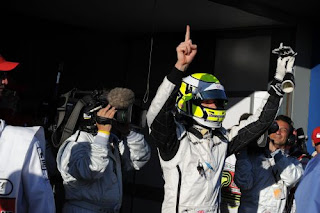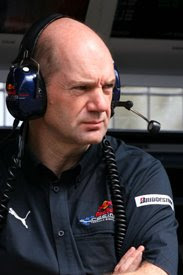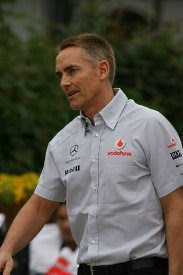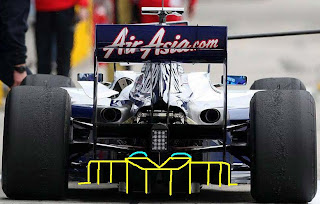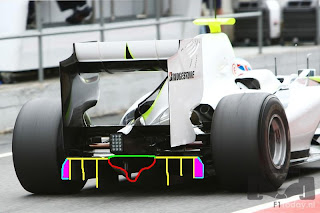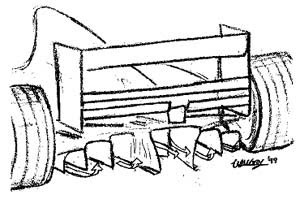sixth time for jason button

Race Resul GP Turkey
Pos Driver Team Time
1. Button Brawn GP-Mercedes (B) 1h26:24.848
2. Webber Red Bull-Renault (B) + 6.714
3. Vettel Red Bull-Renault (B) + 7.461
4. Trulli Toyota (B) + 27.843
5. Rosberg Williams-Toyota (B) + 31.539
6. Massa Ferrari (B) + 39.996
7. Kubica BMW Sauber (B) + 46.247
8. Glock Toyota (B) + 46.959
9. Raikkonen Ferrari (B) + 50.246
10. Alonso Renault (B) + 1:02.420
11. Heidfeld BMW Sauber (B) + 1:04.327
12. Nakajima Williams-Toyota (B) + 1:06.376
13. Hamilton McLaren-Mercedes (B) + 1:20.454
14. Kovalainen McLaren-Mercedes (B) + 1 lap
15. Buemi Toro Rosso-Ferrari (B) + 1 lap
16. Piquet Renault (B) + 1 lap
17. Sutil Force India-Mercedes (B) + 1 lap
18. Bourdais Toro Rosso-Ferrari (B) + 1 lap
Fastest lap: Button, 1:27.579
Not classified/retirements:
Driver Team On lap
Barrichello Brawn GP-Mercedes (B) 49
Fisichella Force India-Mercedes (B) 5
World Championship standings, round 7:
Drivers: Constructors:
1. Button 61 1. Brawn GP-Mercedes 96
2. Barrichello 35 2. Red Bull-Renault 56.5
3. Vettel 29 3. Toyota 32.5
4. Webber 27.5 4. Ferrari 20
5. Trulli 19.5 5. McLaren-Mercedes 13
6. Glock 13 6. Williams-Toyota 11.5
7. Rosberg 11.5 7. Renault 11
8. Massa 11 8. BMW Sauber 8
9. Alonso 11 9. Toro Rosso-Ferrari 5
10. Hamilton 9
11. Raikkonen 9
12. Heidfeld 6
13. Kovalainen 4
14. Buemi 3
15. Kubica 2
16. Bourdais 2
Jenson Button remained unstoppable in the Turkish Grand Prix - taking his sixth win from seven races in 2009 and extending his championship advantage to a mammoth 26 points.
Pole-sitter Sebastian Vettel lost the lead to Button on the opening lap and could only finish third behind his Red Bull team-mate Mark Webber, while Button's Brawn team-mate - and closest title rival - Rubens Barrichello had a disastrous afternoon and eventually retired.
The race fell into Button's hands on the opening lap. While Vettel stayed in front into the first corner, Barrichello stuttered off the line and tumbled back to 13th place.
That removed one of Button's main rivals from contention, and then Vettel ran wide in the Turn 9/10 chicane, allowing Button to take the lead and start charging away with relative ease.
The Briton soon had a four-second lead, which he maintained through the first pitstops. But Vettel then came back at him, moving to a three-stop strategy and benefiting from his much lighter fuel lead to charge back up behind the Brawn.
There was no way past, though, and after 13 fruitless laps in Button's wake, Vettel had to make his second stop, dropping him to third behind Webber and ought of contention.
Button duly cruised away to seal yet another win, while Vettel closed up on Webber in the final laps before the team radioed to inform him that Webber had pace in hand and he should back off and conserve his car. Vettel's speed barely decreased, but he dutifully came home in formation behind Webber.
Jarno Trulli took fourth for Toyota, losing the place to Williams's Nico Rosberg at the first stops but reclaiming it at the second pit sequence, although fifth was still a good result for Rosberg given his frustrations at earlier races.
Ferrari was never in the hunt, and Felipe Massa had to settle for a distant sixth rather than a fourth consecutive Istanbul win. Kimi Raikkonen lost ground on lap one, damaged his front wing slightly running into Fernando Alonso, and ended up ninth.
BMW's Robert Kubica finally opened his 2009 points account by beating Timo Glock (Toyota) to seventh, as the German came through the field using a very long first stint. Kazuki Nakajima did likewise for Williams, but fell back to finish 12th thanks to a slow second pitstop.
Short early stints dropped Alonso's Renault into traffic and left him 10th, while back in the midfield McLaren split its strategies but could not get the one-stopping Lewis Hamilton higher than 13th or two-stopper Heikki Kovalainen above 14th.
Most of the entertainment in an underwhelming race came from Barrichello's spirited early attempts to make up the ground lost at the start. Wheel to wheel action with Kovalainen's KERS-shod McLaren eventually ended in contact at Turn 9 and a quick spin for the Brawn, which then broke its front wing clashing with Adrian Sutil's Force India.
The consequent very early stop put paid to Barrichello's recovery charge, and he was firmly in the midfield when he eventually pulled out with a gearbox problem 11 laps from home.
[AS]
Read More......








